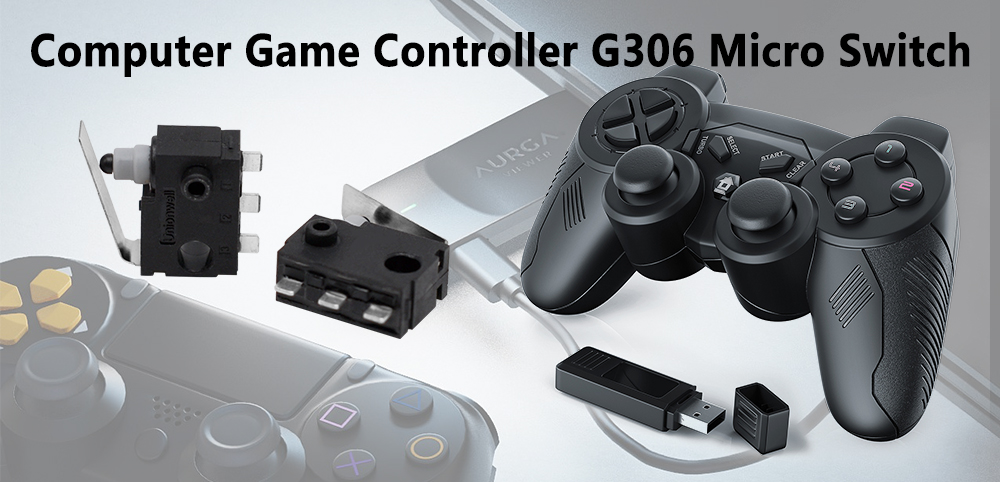Working principle of computer game controller G306 micro switch
The G306 micro switch of a computer game controller refers to the micro button on the controller, which is usually used to trigger specific operations or actions. The working principle of the G306 micro switch is based on its internal triggering mechanism. There is a pair of electrical contacts inside the micro switch. Under normal conditions, these two contact points are separate and do not conduct electricity. When the button is pressed, the movement of the metal arm causes the two contact points to come into contact with each other, forming an electrical connection.
By pressing the button, the G306 microswitch closes the circuit, allowing current to flow. This action triggers an electronic device (such as a computer or game console) connected to the handle to perform the corresponding command or operation, such as the character jumping or shooting. When the button is released, the action of the spring causes the metal arm to return to its original position, separating the electrical contacts and breaking the circuit. In this way, the release of the button can also be detected.
G306 micro switches are widely used in electronic equipment. Their working principle is simple and reliable, and they are suitable for scenarios that require fast response and precise triggering, such as game controllers, mice, etc.

The structure of a computer game controller
The G306 micro switch usually consists of a spring-loaded metal arm and a trigger button. When the button is pressed, the metal arm is compressed, triggering the switch. Computer game controllers are usually composed of multiple parts, each with specific functions and structures. The handle housing is the outer part of the handle, usually made of plastic or other lightweight but strong material. The shell contains the overall shape and design of the handle, as well as the location and layout of buttons, rockers, etc.
Some advanced gamepads may also include a touchpad for more flexible input methods. Touchpads often support gesture operations, expanding the player’s interaction options. The controller is usually connected to the game console or computer via wired or wireless means. Wired connections typically use a USB port, while wireless connections use Bluetooth or a dedicated wireless receiver. If the controller is wireless, it usually requires a power source. The handle has a built-in battery and can be charged via USB or use a replacement battery.
Computer game controller buttons
There are multiple buttons on the gamepad that are used to perform different actions. Common buttons include A, B, X, Y buttons, direction keys, shoulder buttons (L1, L2, R1, R2), and the central Home button. These buttons trigger corresponding signals through mechanisms such as micro switches. The trigger buttons on a game controller are usually located on the back side of the controller, such as the L1, L2, R1, and R2 buttons. They provide simulated pressure feedback, giving players more fine-grained control over in-game movements.
Many game controllers feature vibration feedback to enhance players’ awareness of in-game events. This is achieved via a built-in vibration motor. The structure of game controllers is complex and diverse to meet the needs of different types of games and provide players with a richer interactive experience.
Computer game controller joystick
Gamepads usually feature two joysticks, which are used to simulate movement of a character or game. The sticks can move in multiple directions and have perceptible damping and feedback. A joystick’s controls are usually made of durable plastic or rubber material to provide a comfortable feel and grip. The base is usually made of hard plastic or metal to ensure stability and durability.
The design of the rocker allows for movement in multiple directions, typically up and down, side to side, and diagonally. This allows players to achieve more precise and flexible control in the game. Gamepad rockers have adjustable damping to change the stiffness or sensitivity of the control sticks. In addition, joysticks often work with vibration feedback systems to provide players with a more intuitive gaming experience.
The gamepad joystick also integrates buttons, such as pressing the joystick, for additional operations. This design allows for more interactions on the joystick, increasing the diversity of inputs. Joysticks are often used to simulate character movement, perspective control, or other situations that require flexible directional input in games. For example, in an action-adventure game, the left stick might be used to control character movement, while the right stick might be used to adjust the perspective.
